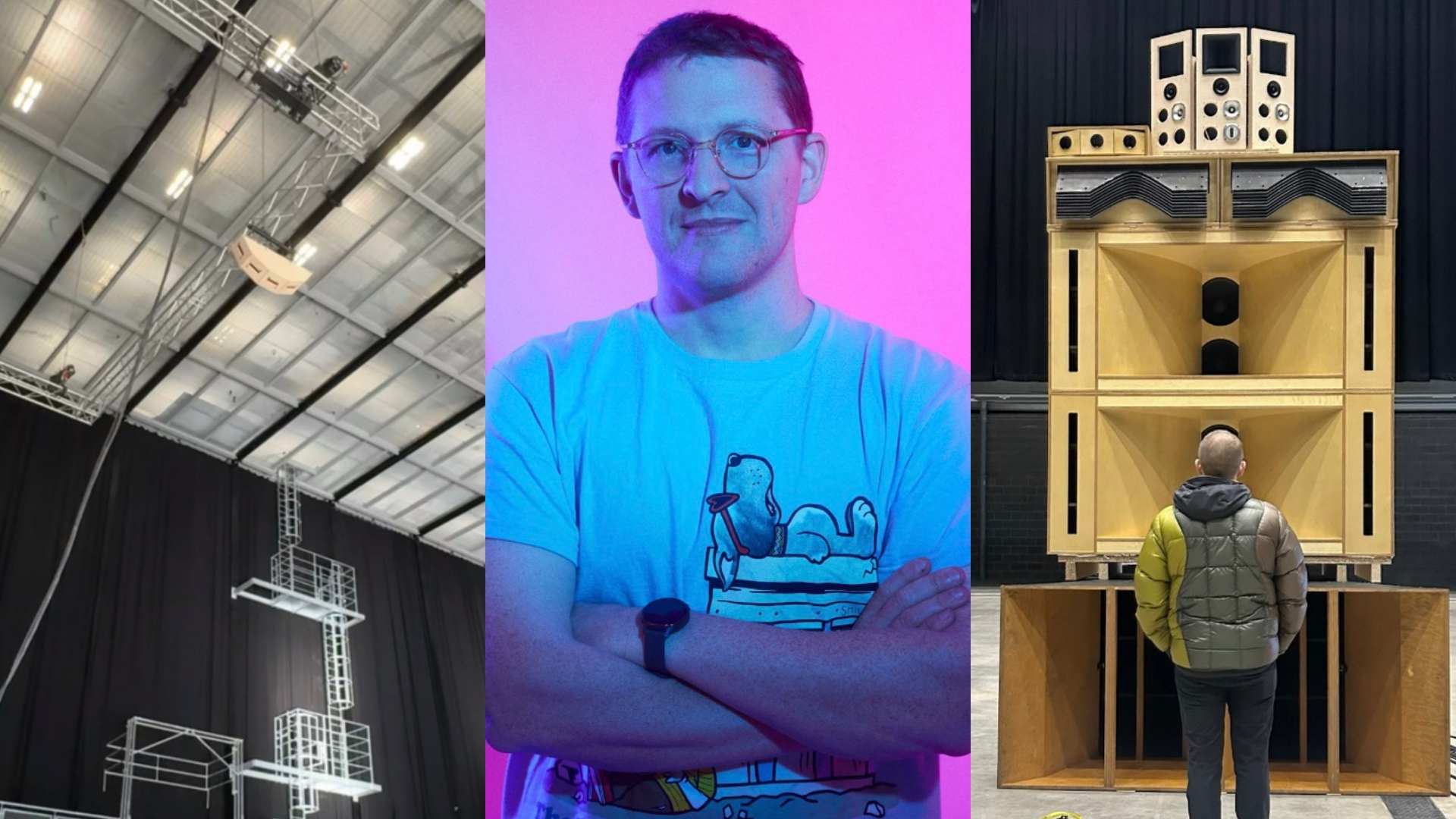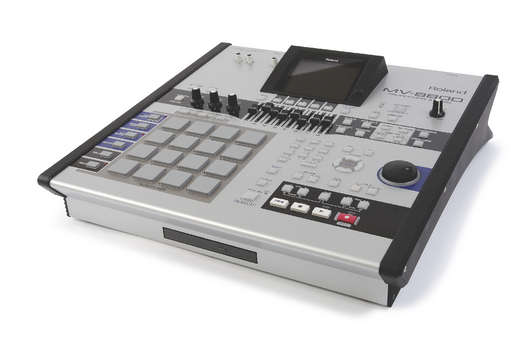MusicRadar Verdict
All-singing, all-dancing, al grooving, all, er, burning. Get it all right here!
Pros
- +
Huge amount of functionality.
Cons
- -
XLR mic inputs would have been good.
MusicRadar's got your back



Roland have such a proud recording, synthesis, sampling and effects processing tradition that it´s no wonder each of their digital multi-trackers has spawned more features than the last, culminating in the MV-8000 Production Studio in 2004. And now Roland are at it again, and the fruit of their labours offers a staggering range of functions under one roof.
The top panel gives a pretty good indication of some of the joys that lie beneath. If you allow your eye to wander over the fascia you´ll be immediately struck by three things: a set of 16 Akai MPC-style pads in the bottom left-hand quarter, a collection of eight short-throw faders and a recessed, angled colour screen whose output can be sent to a VGA monitor via rear-panel connection.
It´s a layout that screams ‘play me!´ and after a short boot-up time, that´s exactly what you´ll find yourself doing. The 8800 earns its tag of ‘Production Studio´ by having a shot at pretty much every stage of the recording process, with sequencing, synthesis, sampling, audio recording, effects processing, mastering and CD-writing all available ‘in-house´.
Making music
In terms of song creation, the MV-8800 is split into two primary modes: ‘Pattern´ and ‘Song´. Pattern comes first and tends to be looped phrases of a few bars in length. Plenty of these ship with the MV-8800 itself, but the freedom to create your own will appeal most. Notes can be input into patterns in a number of ways, the most enjoyable of which is to bash your sequence out on the velocity-sensitive pads. If you´re using one of the library drum kits for example, the individual hits are mapped to each pad, so all very straightforward.
Alternatively, you can input notes from a MIDI keyboard, or individually in step time. The library of sounds is one of the major updates from the MV-8000, as the 8800 ships with source material from a number of Roland drum machines, including the TRs 808 and 909. Alongside these you´ll find a collection of pianos, guitars, effects, basses and the like - so you´re making music right out of the box.
This library is pre-installed for you, but the 8800 also ships with CD-ROMs of additional content, and a further support library is bound to grow over the coming months. The quality of the sounds provided is excellent, but while it would dramatically inflate the unit´s cost it'd be good to see Roland implement a fuller, XV-style sound module into the 8800 for an even greater range of possibilities.
Sample mania
But perhaps that's just our laziness - after all, the MV-8800s second primary function is as a sampler. To make a recording, simply attach your chosen sound source to one set of inputs on the unit´s rear - both quarter-inch TRS inputs and phono ins are available here (DJs take note). Roland provide their own library of sampled phrases and loops, and the ‘recycled´ nature of these means that you can shift a pattern or song´s tempo and they will BPM-match automatically, meaning the creative process of pattern-building flows even more smoothly.
A number of sample-edit tools are ready and waiting for you too, if you want to take a more hands-on approach to time-stretching and pitch-shifting, for instance. It´s also possible to sample through the effects processors, so you can commit to specific effects treatments early on if you so desire. Samples and audio recordings can also be imported via a dedicated button with a selection of audio formats supported.
Perhaps in an aggressive move to go after some of Akai´s MPC devotees, MPC samples are among these.
Sing a song
Once your source material is gathered you´re ready to switch into Song Mode. One neat feature immediately strikes you - the screen changes colour. Pattern mode is a pleasing purple, while Song mode is blue, so you never lose track of where you are. Songs enable you to work with a range of different types of data.
For starters you can import those patterns you´ve lovingly created and copy and paste these as required. Song mode provides you with up to 128 MIDI tracks alongside eight audio tracks, the latter of which the 8800 sees as an extension of the sampler. This means that audio performances are captured by the sampler like the shorter looped phrases mentioned previously, and so are capable of similar, BPM-sync´d responses. Recording is realtime and in performance this is rock-solid even when audio is being added to more complex song arrangements.
One omission of note is the lack of an XLR input on the MV-8800. Again, I´d add this to my wish-list, as an input of this type with a dedicated phantom power switch would add a useful further dimension to the possibilities here.
Effects and mixing
Once your track is taking shape, it´s time to turn to the 8800´s virtual mixer and effects sections. Both have dedicated switches on the front panel, so navigation is easy. The mixer lets you control 24 input tracks, plus effects auxiliary busses, and the screen neatly projects a regular mixing desk setup to aid you. The faders below the screen allow the adjustment of levels and a separate 3-band EQ is available to every sound within your mix.
The mixer also allows software control over the audio inputs, so you could actually perform through this box on stage if you so desired. Effects-wise, the 8800 doesn´t let you down either. There are three separate processors in total, with Roland´s MFX (multi-FX) the most exciting of these.
This provides one of 25 FX algorithms, which can be assigned to a buss and made available to any track. Alongside the MFX, more basic reverb and delay/chorus units are available, again with multiple algorithms from which to choose.
Mastering
The final piece of the puzzle is to convert your tune into a fully-mastered CD. A set of mastering tools is available at this stage, including multiband compressor and limiting. The mastering stage imports the WAV file you´ve created at the mixdown stage in ‘Song´ mode and allows you to create a new, mastered version, which is saved into a ‘Masters´ folder.
When you´re ready to author a CD of your masters, a dedicated function handles this, allowing you to order your tracks and to specify the gap you want between each one.
You can´t fault Roland for effort here, and although it´s not always easy to think that dedicated boxes like this can see a project through from beginning to end, it´s not too bold a claim for the MV-8800. There´s further room for expansion and our wishlist would include dedicated XLR mic inputs, separate studio and control room outputs and a bigger onboard ‘sound module´.
This is a professional box that´s also great fun and intuitive to use. As such, it fulfils two of the biggest requirements of any studio: it's inspiring and it can deliver.
MusicRadar is the number 1 website for music makers of all kinds, be they guitarists, drummers, keyboard players, djs or producers...
GEAR: We help musicians find the best gear with top-ranking gear round-ups and high- quality, authoritative reviews by a wide team of highly experienced experts.
TIPS: We also provide tuition, from bite-sized tips to advanced work-outs and guidance from recognised musicians and stars.
STARS: We talk to musicians and stars about their creative processes, and the nuts and bolts of their gear and technique. We give fans an insight into the actual craft of music making that no other music website can.

“A high-quality solution for capturing your drums”: Sennheiser MD 421 Kompakt review

“I need to build a sound of my own that has the power that I want”: Floating Points hates festival sound systems so much that he’s invented his own

“How daring to have a long intro before he’s even singing. It’s like psychedelic Mozart”: With The Rose Of Laura Nyro, Elton John and Brandi Carlile are paying tribute to both a 'forgotten' songwriter and the lost art of the long song intro









